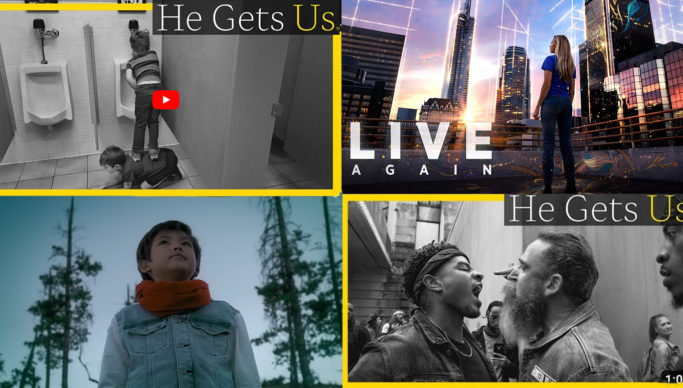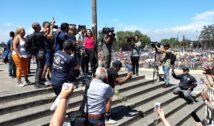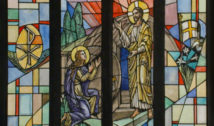
World Religions of Christianity and Scientology Partake In The “Holy Rite” of Super Bowl LXVII
- By Tami Lang --
- 14 Feb 2023 --
Once a year a large religious event occurs in this country. It is a religious event because it brings people of all cultures together as one in a common goal that is larger than any single individual. It involves prayer before, during and sometimes after the event and requires passion, sacrifice, trial and ultimately jubilation.
The event is the Super Bowl, witnessed by 112.3 million people last year or more true believers than Christian church attendees (out of about 332 million Americans 64% identify as Christians and 47% of those claim to have attended church at least once a week. If you do the arithmetic, that amounts to about 100 million churchgoing Christian Americans, or over 10% less than the adherents of the religion of Super Bowl.)
And the Super Bowl, like any great communal religious experience, consists of a feast (tailgating at the stadium, or buffalo wings and munchies around the TV) and a celebration—the half-time show. Religion is baked into every aspect of the game. The pre-game team prayer for victory—nearly a third of Americans believe that God has a hand in the outcome, after all—the finger pointed upward in thanksgiving after a touchdown; the fan, caught on camera at the game’s moment of truth, standing transfixed, eyes closed, hands clasped, lips murmuring a silent plea to the Almighty. And of course the most ennobling and transfiguring leap of faith in the game—the “Hail Mary”—named after the Holy Virgin.
Like any great religion Super Bowl has its traditions. One cherished custom is the Super Bowl commercial. This is the one event of the year when people actually look forward to the commercials. They stay glued to the TV and watch their favorite movie stars—often parodying their iconic roles—sell soft drinks or cellphones. These commercials are of the highest quality, with superb production values and why not? With a potential audience of 112.3 million-plus, it’s a no-brainer. So it’s no surprise that religions, too, choose to promote their messages during this most-watched television event of the year.
Super Bowl LVII witnessed two religions roll out the red carpet. The one—Christianity—in an effort to revive flagging interest and attendance. The other—Scientology—to kindle even more interest as its numbers continue to go up.
Two faiths—one ancient, the other new; one losing momentum, the other gaining—are using time-tested principles of marketing to air their message on a worldwide platform: the Super Bowl.
The He Gets Us campaign which aired two commercials during the Sunday game was the brainchild of a perceived need to re-brand the Savior in an effort to separate Him from certain followers who, per market research, have cast a negative shadow on Christianity and by association with Jesus. Those who are soiling the brand include evangelical leaders who maintain that culture-war politics supersedes such Christian staples as loving kindness, forgiveness and integrity.
The ads follow the positioning of the campaign in placing Jesus in a modern context. One focuses on how children express the Redeemer’s love, while the other deals with anger, and how Jesus handled it differently. Each ad ends with the tagline, “He Gets Us.”
The Scientology ad, titled, “You Can Live Again,” features an original song, “Live Again.”
A voice-over narrator guides us through images of despair—a shopkeeper staring at the ruins of his vandalized store; a child wandering through the debris of a burned-out forest; a woman gazing at a shattered mirror; a frustrated architect at a blank drawing board. “If you think that all is lost, that every dream has faded, that the last light of hope is gone,” the voice tells us, “think again.” As the music swells and the shadows vanish into light, the voice continues. “It’s there within you, something that can never die,” as the shopkeeper’s store miraculously becomes whole again and the child with a touch brings a flower into bloom.
The resurrection of dead things continues as the voice says, “The power to rise again, to create, to live again.” The shattered bits of glass coalesce, the architect begins to sketch, and as he does so his drawing manifests itself in the real world: a beautiful city skyline appears and then transfigures into a multicolored work of art through a child’s chalk street painting that rises and spreads itself like a tapestry through the once-drab urban scene. The images of renewed life and hope are interspersed with a brief glimpse of a Scientology counseling session utilizing the church’s pastoral artifact, the E-Meter. “Because nothing is more powerful than you,” the voice concludes.
And, just like the He Gets Us ad, the Scientology message, too, leaves us with a final thought: the tagline, “Curious?”
The analogy of sports to Life is not a new idea—competition, skill, striving, the crucial mistake, the lucky break, the unbearable suspense, the incomparable joy of victory, the inconsolable anguish of defeat. And underpinning it all and making the struggle worthwhile are the ineffable, elusive and sacred elements: hope and faith. Small wonder that two world religions would use the main stage of a mighty sporting event to offer their spiritual wares to a world in dire need of them.



















